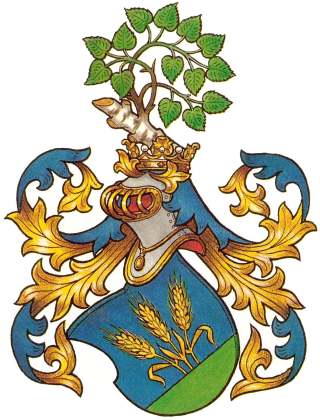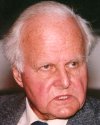

Carl F. von Weizsäcker
This coat-of-arms of physicist
Carl von Weizsäcker
(1912-2007)
is a copyrighted image
drawn by the renowned heraldic artist
Carl-Alexander von Volborth (1919-2009).
Azure from a terrace Vert issuant three wheat stalks Or.
Crest[?]: A man issuant holding in his right hand three wheat stalks
Or,
his left hand on his hip.
["Die Weiszäckers" by Martin Wein, p. 19.
Cf. F. Velde]
German blazon, courtesy of Jochen Wilke :
Blau, drei goldene Weizenhalme aus
grünem Schildfuß wachsend.
(In Anglo-French style: Blau, drei
Weizenhalme Gold, wachsend aus Schildfuß Grün.)


